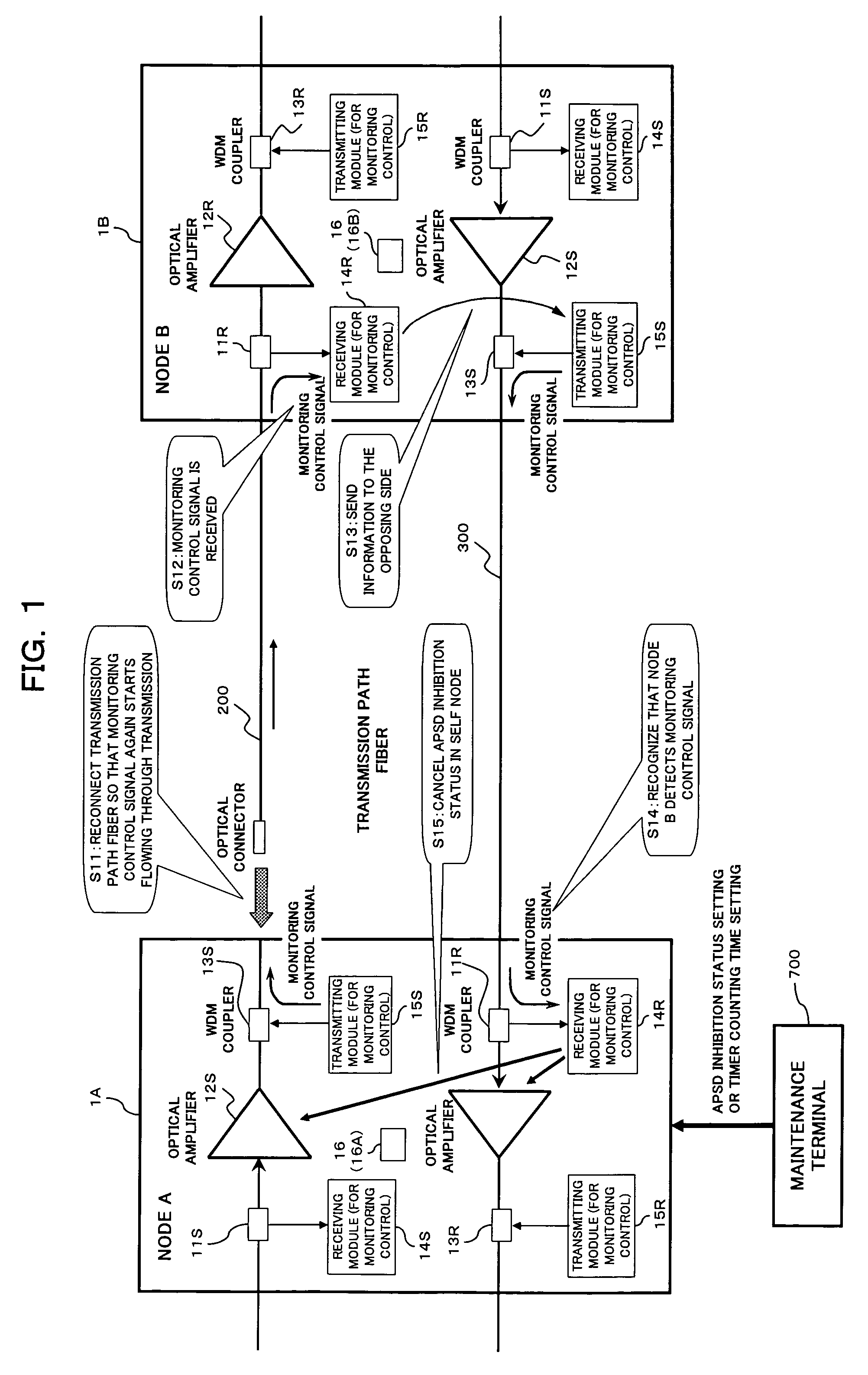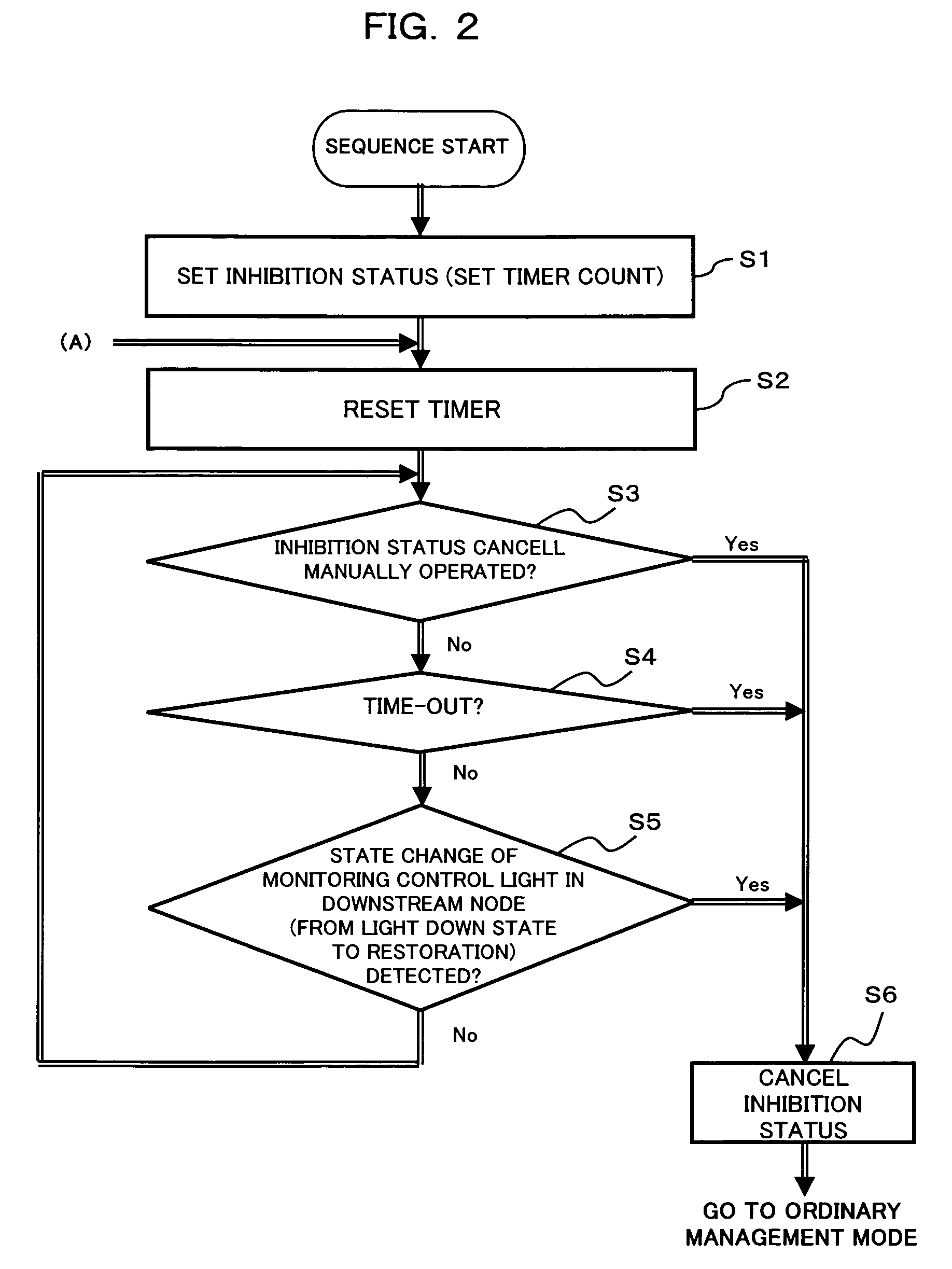Optical output control method for use in optical transmission node and optical output control apparatus for use in the same
a control method and control apparatus technology, applied in the direction of transmission monitoring, electromagnetic repeaters, instruments, etc., can solve the problems of automatic reduction of optical output, inability to perform power measurement or the like, and inability to perform power measurement, etc., to achieve remarkable improvement of the security environment of a worker such as a maintenance engineer
- Summary
- Abstract
- Description
- Claims
- Application Information
AI Technical Summary
Benefits of technology
Problems solved by technology
Method used
Image
Examples
first embodiment
[A] Description of First Embodiment
APSD Inhibit Automatic Cancellation
[0049]FIG. 1 is a block diagram showing an arrangement of a WDM optical transmission system as a first embodiment of the present invention. Similarly to the aforesaid system described with reference to FIG. 10, the WDM optical transmission system shown in FIG. 1 also is arranged to include an optical transmission apparatus (optical node) 1A (station A) and an optical transmission apparatus (optical node) 1B (station B) which are cross-connected to each other through a couple (two) of optical transmission paths (transmission path fibers) 200 and 300. Thus, bidirectional communication can be performed in the arrangement.
[0050]Also in the present embodiment, each of the optical transmission apparatus (hereinafter sometimes simply referred to as “node” or “station”) 1A and 1B has a symmetrical arrangement. That is, each of the optical transmission apparatus has, as a transmission system, WDM couplers 11S and 13S, an o...
second embodiment
[B] Description of Second Embodiment
Transmission Path Fiber Open Real Time Management
[0096]When the inhibition status is taken place in the upstream-side station 1A (1B), the time setting of the restoration timer can be arbitrarily performed from the maintenance terminal 700. The restoration timer will star time counting from the timing point when the inhibition status is taken place. In this case one situation can be considered that when the inhibition status is taken place, the station is connected with the transmission path fiber 200 (300) (i.e., the station is brought into the ordinary management mode). In this case, light will emit from the fiber during a time period corresponding to a time interval, i.e., from a timing point when the timer has time set to a timing point when the transmission path fiber 200 (300) is pulled out.
[0097]In this case, if the timer setting time is reasonably short time, there will be no serious problem caused. However, if the timer setting time is ex...
PUM
 Login to View More
Login to View More Abstract
Description
Claims
Application Information
 Login to View More
Login to View More - R&D
- Intellectual Property
- Life Sciences
- Materials
- Tech Scout
- Unparalleled Data Quality
- Higher Quality Content
- 60% Fewer Hallucinations
Browse by: Latest US Patents, China's latest patents, Technical Efficacy Thesaurus, Application Domain, Technology Topic, Popular Technical Reports.
© 2025 PatSnap. All rights reserved.Legal|Privacy policy|Modern Slavery Act Transparency Statement|Sitemap|About US| Contact US: help@patsnap.com



